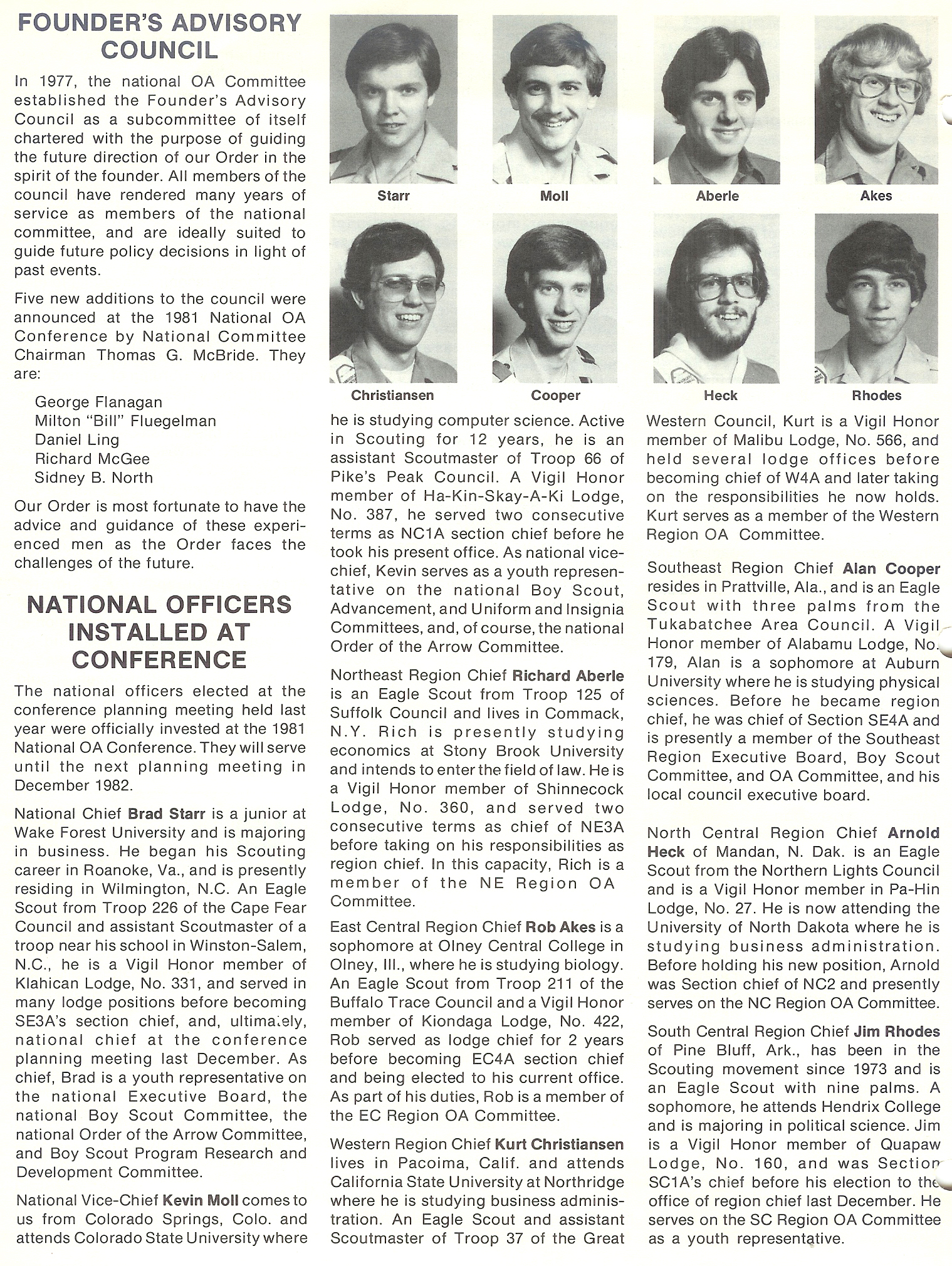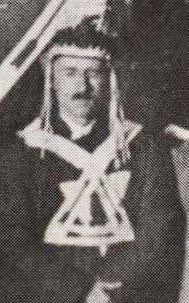Shawnee Lodge, St. Louis, Missouri at their Camp Irondale, hosted the 1938 National Meeting. Just like the 1936 National Meeting, the 1938 National Meeting was no longer handling Order of the Arrow business, with the notable exception of National Lodge officer elections. The National Executive Committee handled the business of the Order and had increased in number from three to five members plus a National Council BSA representative.
The official statistics reported at the meeting demonstrated the dramatic growth of the OA. At the time of the meeting there were 103 active lodges and for the first time over 10,000 active members and over 25,000 initiated. The OA was a nationwide growing phenomenon. A record 448 delegates attended the meeting from a record 44 lodges. After traditional reports from the national officers, the meeting broke into eight discussion groups.
The discussion groups each had a theme and delegates decided which one was of greatest use or interest to themselves and their lodge. This is the first example of training at a national conference of Arrowmen where multiple class options were offered. Training has remained over all of the years an essential function of national gatherings of Arrowmen.
The groups were:
Lodge Service – How the lodge can best serve their council, camp and community.
Lodge Activity – Discussion of events, social and service related for lodges. In 1938 many lodges had still never held a lodge fellowship.
Costuming Honors Teams – This was a discussion dedicated to regalia for the Ordeal, Brotherhood and Vigil ceremony teams.
Lodge Secretaries – Led by National Scribe Nelson, this was a session dedicated to the role of lodge secretaries. Nelson advocated that an adult should be in charge of the records in multiple year terms for continuity because of its complexity and importance. This concept, adult officers is how the Order had always been. Ten years later, Nelson had a very different view about the need for youth leaders.
Lodge and Chapter Chiefs – This group discussed the role of lead officers in the Order. In 1938 chapters were almost exclusively in highly populated councils. The typical chapter in New York or Chicago had a dedicated Scout camp for their district or division. A chapter chief represented as many or more Arrowmen than the typical lodge chief.
Camp Attendance Promotion – It is a long held tradition of the Order to give service in the promotion of summer camp and camping to the troops throughout the council. The OA was still at its core a camp society.
Lodge Activities in Lone Troop Camps – In 1938 there were still areas of the country, typically rural areas, where troops had not or could not form. Many lodges had council boundaries that included Lone Scouts. This session discussed ways to involve Lone Scouts in the Order.
Order of the Arrow in the Scout Troop – This session discussed what Arrowmen could do within their troops.
National officer elections were held. The nominating committee selected two Arrowmen for each office and 10 choices for the five Executive Committee positions. For the first time only the winners’ names were recorded in the minutes. All of the officers elected were adults and professional Scouters with the exception of H. Lloyd Nelson now of Kuwewanik Lodge, Pittsburgh, Pennsylvania who was re-elected National Scribe. Future Chief Scout Executive Joseph A Brunton of Anicus Lodge, Wilkensburg, Pennsylvania was elected National Chief. Brunton was the second National/Grand Lodge Chief that would later serve as the head of the BSA as Chief Scout Executive. George Mozealous from Owasippe Lodge, Chicago, Illinois was elected National Treasurer. The Arrowmen elected to the National Executive Committee were Joseph Brinton, Carl Bryan, Thomas Cairns, Walter Gunn and Merle Shippey, the Supreme Chief of the Fire for the host lodge, Shawnee.
2, Elections, National Event, OA, Scouting

